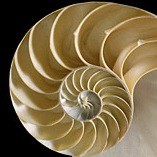Relating the Basmalah to Allah’s Name
The name Allah in Arabic is written using 3 unique letters to form a 4-letter name. This pair of numbers — 3,4 — can be found reflected throughout the Quran in various ways. In the Basmalah it can be found in its verbal structure: 3 names of Allah in a 4-word statement. It can also be found specifically in the name Al-Raheem which is mentioned 34 times as it exactly appears in the Basmalah as a name, and 3⁴ times if one counts the adjective raheem.
From 3,4, we can also derive the numerical perimeters of the Basmalah: 3+4=7, the number of letters in the first 2 words of the Basmalah, and 3×4=12, giving us the number of letters in the last 2 words of the Basmalah. These two resulting numbers, 7 and 12, are significant Quranic numbers, which added together result in the third significant Quranic number, 19. This then is an “apex” number, expressed in how the Quran introduces it: “Over it is 19.” The “it” was referring to hell using the word saqar. But as a separate indefinite phrase, this expression is open to wider interpretation, as are other such expressions in the Quran. Below I have found another correlation between the Basmalah and the Quranic numbers 19, 7, and 3 that have bearing on its meaning and centrality to Quranic architecture.
Continue reading












